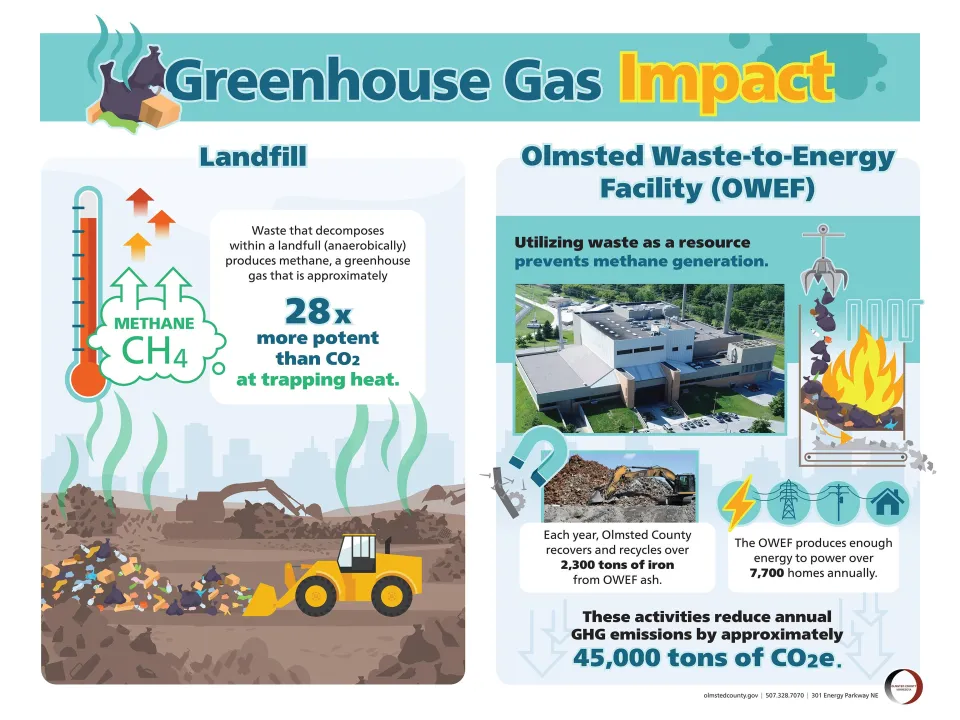Olmsted County's Integrated Solid Waste Management System and Greenhouse Gas Impact
What is the greenhouse effect?
The greenhouse effect is the process through which heat is trapped near Earth's surface by substances known as 'greenhouse gases.' Imagine these gases as a cozy blanket enveloping our planet, helping to maintain a warmer temperature than it would have otherwise. Greenhouse gases consist of carbon dioxide, methane, ozone, nitrous oxide, chlorofluorocarbons, and water vapor. Water vapor, which reacts to temperature changes, is referred to as a 'feedback', because it amplifies the effect of forces that initially caused the warming.
Sources of Greenhouse Gases in Minnesota
The solid waste industry produces a relatively small fraction of the total greenhouse gases (GHG) generated in the state.
Waste-to-Energy vs Landfilling
The Olmsted Waste-to-Energy Facility (OWEF) generates significantly less GHG than a traditional landfill by taking a more sustainable approach to managing waste. This is achieved in three key ways:
1. Burning garbage prevents the production of methane, a potent greenhouse gas typically released by waste decomposing anaerobically in landfills.
2. Each year, Olmsted County recovers and recycles over 2,300 tons of iron from OWEF ash.
3. By utilizing garbage as biomass fuel, the OWEF produces enough energy to power over 7,700 homes annually.

